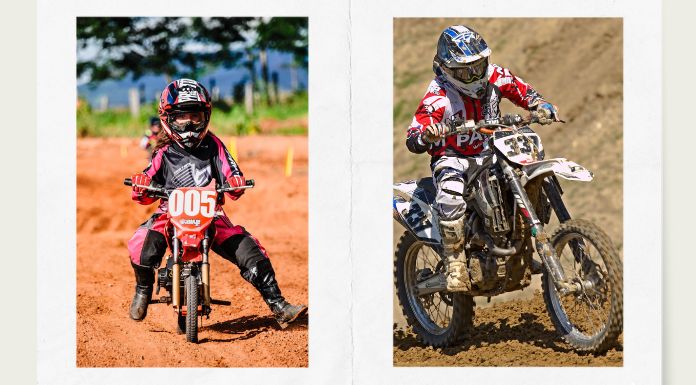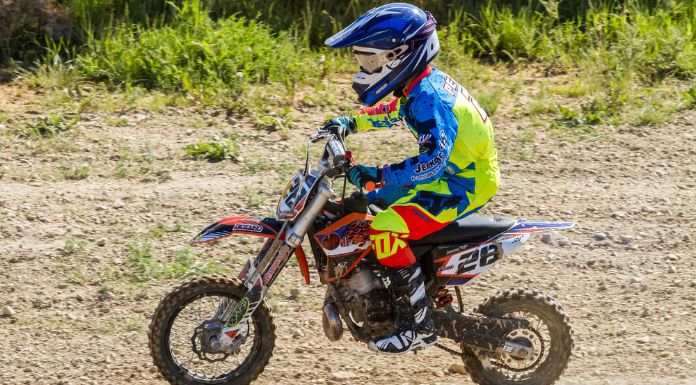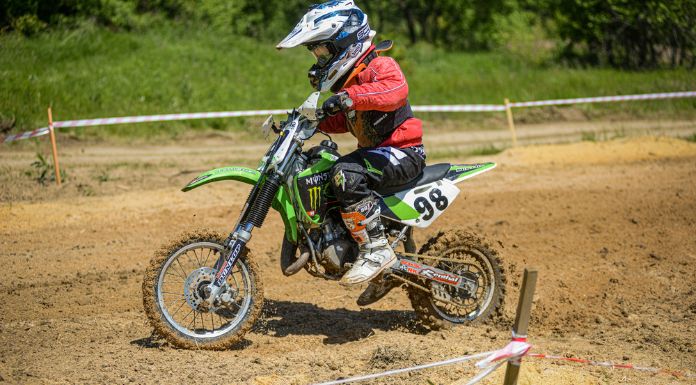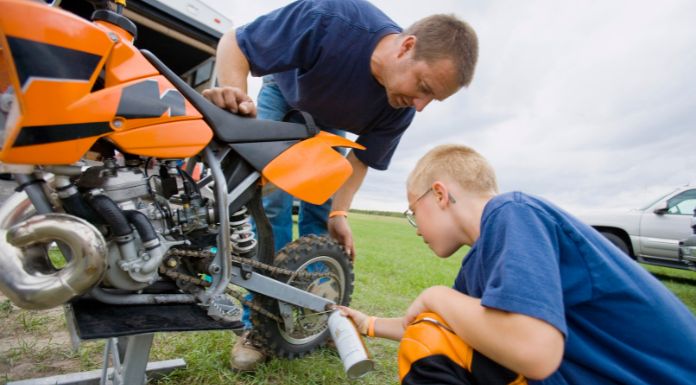When it comes to off-road riding, an option that comes to mind is pit bike vs dirt bike. While both are used for off-road riding, their terms are not interchangeable. There are significant differences between the two. They have distinct characteristics, purposes, and applications.
A pit bike is a miniature version of a dirt bike. It has a smaller frame, engine size, and power than a typical full-size dirt bike. These differences mean differences in performance and applications. While pit bikes are growing in popularity, many people cannot tell them apart from dirt bikes.
The importance of understanding the key differences between these two cannot be overstated. When you understand, you will not misuse either bike, risking damage to the bike’s mechanics or even injury to yourself. This article will provide an overview to help you grasp the unique qualities of each bike.
Purpose and Use

In a pit bikes vs dirt bikes comparison, differences lie in their purpose, performance and usage.
You can think of a dirt bike as a broad group of off-road motorcycles which has 5 categories: Motocross, Enduro, Dual-Sport, Trials and Trail (or Off-road) bikes. All bikes in these 5 categories are referred as dirt bikes because they have off-road capabilities. But Pit bikes are generally sold under Trail Bike (or Off-Road) bikes category such as the Kawasaki 110R.
Another distinct characteristic is that pit bikes are usually referred to off-road bikes with engines between 50cc to 125cc. However, over the years the term pit bike has been loosely used for bigger bikes up to 160 cc.
Here are some of the ways both can be used:
Common uses of pit bikes
Pit bikes were used in the pit or staging areas during motocross events or dirt bike races. Their main function was to provide quick transportation for riders and their equipment. This is without having to navigate the otherwise treacherous path of the motocross track.
Over time, pit bikes gained popularity as recreational bikes and are now mostly used for:
- Stunt performance
- Pit bike races
- Casual riding around designated riding areas
- Practicing riding skills
“helps make me feel more comfortable“
Willy Browning – Arenacross racer
Common uses of dirt bikes
Dirt bikes, on the other hand, are built explicitly for off-road riding. But unlike pit bikes, they can handle a wide range of terrains. The more rugged and challenging the terrain, the more appreciated the use of a dirt bike. While dirt bikes can be used for recreational purposes, their principal function is competitive racing.
Some of the dirt bike uses include:
- Competitive racing like motocross and supercross racing
- Off-road adventures as with trail and enduro dirt bikes
- On-road use as with dual-sport bikes
Size and Design
Another difference between pit bikes and dirt bikes is their size and weight. As mentioned earlier, pit bikes are smaller versions of dirt bikes.
Pit bike size and dimensions

Pit bikes are considerably smaller and lighter when compared to dirt bikes. Their average seat height ranges from 26 inches (660mm) to 32 inches (813mm). The weight of a pit bike can vary based on the engine size. But the average weight is between 100 lbs (45kg) to 150 lbs (68kg).
Pit bikes have compact frames and are lightweight. This makes them suitable for riders of all ages and skill levels.
Dirt bike size and dimensions
Dirt bikes are larger and heavier. They feature taller seat heights, averaging about 37 inches (940mm). Depending on the types of dirtbikes and its engine size, its weight can be as high as 456 lbs (207kg). Their larger size and weight provide increased stability in demanding off-road conditions.
Tires
Dirt bikes typically have larger tire sizes. This ranges from 21 inches (533mm) to 18 inches (457mm). Dirt bike tires are knobby. They feature aggressive tread patterns that help optimal off-road traction. The street-legal dirt bike tires have to be DOT approved.
Pit bikes have smaller tire sizes. This is usually around 14 inches (356mm) for the front and 12 inches (305mm) for the rear. They have less aggressive tread patterns.
Suspension and brakes
Dirt bikes feature high-performance suspension systems that handle more aggressive riding. They have robust front forks and rear shocks. They offer better damping and adjustability. This allows dirt bikes to absorb impacts and provide smoother rides.
Due to their high speed, dirt bikes also come with an advanced braking system. This provides sufficient stopping power and better handling. Meanwhile, pit bikes have simpler suspensions and brakes. While they offer decent performance for small jumps, they may struggle to handle rougher terrains.
Engine/Transmission Power and Performance
Power and performance capabilities are key differentiators between pitbike vs dirtbike. From the engine sizes available to torque generation, these differences matter.
Pit bike engine specifications
Pit bikes have smaller engines. They come in a 4-stroke engine type. Like most pit bike vs mini bike, they are best suited for beginners and kids. Hence, the power delivery of a 4-stroke is ideal. Their engine sizes range from 50cc -250cc. Pit bikes are not designed for top-speed performances. So, their performance is mid-range.
Dirt bike engine specifications
In contrast, dirt bikes boast more powerful engines. They can come in either 2-stroke or 4-stroke. This means higher horsepower and torque generation. Dirt bike engine sizes can go as high as 650cc.
Gears and Shifting
Pit bikes and dirt bikes both utilize multiple gears and shifting mechanisms. Pit bikes usually have 3 or 4 gears while full-size dirt bikes have 5 or 6 speed transmissions.
Shifting involves using a clutch lever to disengage the transmission while changing gear. Most dirt bike vs pit bike for adults come with a manual clutch. The smaller bikes may have either a manual or automatic clutch.
Terrain Suitability
Pit bikes differ from dirt bikes in the types of terrain they can be ridden on. This shows one of the most distinguishing characteristics of the two.
Terrain suitable for pit bikes
Pit bikes are made for less rough terrains than dirt bikes. They can accommodate rides on smooth trails, cleared paths, or paved roads. Their construction and components do not support riding on rough trails.
Terrain suitable for dirt bikes
Dirt bikes can handle a wide range of terrain. This includes muddy, sandy, and rocky surfaces. The build quality of dirt bikes can withstand these rough terrains.
Are pit bikes street legal?
If you’re wondering, are pit bikes street legal? Pit bikes are not factory-made street legal. But they can be modified for on-road use. This involves meeting registration requirements and fitting the bike with the necessary accessories. These accessories like lights and turn signals ensure the safety of road users.
Build-wise, pit bikes are similar to motocross dirt bikes. But they cannot be used for motocross racing. The frame of a pit bike is so compact that its engine is built lower to the ground. This can cause mechanical damage to the bike if it is subjected to the rough riding conditions of a motocross racing track.
Cost and Affordability
Costs are significant factors to consider when making a choice. The overall affordability may influence your choice.
Price range of pit bikes

Pit bikes are more affordable than dirt bikes. This is due to their smaller engine size and design. Even if a dirt bike of similar engine size were to be compared with a pit bike of the same size, the pit bike would be cheaper. This can be attributed to the construction materials used in building a pit bike. Pit bikes typically cost between $500 to over $2000.
Price range of dirt bikes
Dirt bikes are more expensive. Their construction materials are of a different quality. They come with larger engines, advanced suspension systems, and specialized components. These add to their higher price points. Dirt bike price ranges from $3,000 to $10,000
Cost considerations when choosing between pit bikes and dirt bikes
When choosing between a pit bike and a dirt bike, cost considerations play a significant role. Pit bikes are cheaper to buy compared to dirt bikes. But dirt bikes offer more advanced features. They also have higher performance capabilities. This makes them a pricier option.
Pit bikes can be modified to sport advanced components and enhance their performance. But this comes at an extra cost that eventually adds up to the initial purchasing price.
Maintenance and Durability
Pit bikes and dirt bikes are both popular choices for off-road riders. But when it comes to maintenance and durability, there are some notable differences. These differences can also be based on brand type.
Maintenance requirements for pit bikes
Pit bikes have simpler designs and are thus easier to maintain. Change the air filters and oil when due and the bike is good to go. But pit bikes come mostly in 4-stroke engines. This means more parts require maintenance. This demands more work.
But since 4-stroke engines have more parts doing less work, there is little need for more frequent maintenance. In terms of durability, there are a lot of good brands that offer longevity and reliability. An example is the 110cc dirt bike, KLX 110R. The cheaper ones like the Chinese brands have less reputation for durability.
Maintenance requirements for dirt bikes

On the other hand, dirt bikes have more complex systems and designs. Since they are used in intense and aggressive riding, they relatively require a lot of maintenance.
These complex components and advanced systems contribute to the durability of dirt bikes. The implication is a more intensive maintenance routine with higher repair costs. Still, dirt bikes offer value with the durability their quality components afford.
Safety Features
When it comes to safety features, there are some distinctions between pit bikes and dirt bikes. Since they are used for different kinds of off-road riding, safety features differ.
Safety features of pit bikes
Pit bikes come with fewer safety features. They have brakes. Some models come with throttle limiters since pit bikes are primarily used by kids. They lack more advanced safety features like turn signals and horn systems.
Safety features of dirt bikes
The aggressive style of riding of dirt bikes calls for a wider range of safety features. These are the ABS braking systems and skid plates for protection. Others include tire tread patterns for better traction, and advanced suspensions, among others.
Pros and Cons
Like most things, there are pros and cons to dirt bikes and pit bikes. These pros and cons are:
Pros and cons of pit bikes
Pros:
- Affordable
- Fewer maintenance requirements
- Great for beginners
- Good for recreational use
Cons:
- Less durable
- Less speed
- Limited terrain suitability
Pros and cons of dirt bikes
Pros:
- More safety features
- Better performance
- Wider terrain range
- Larger size and more comfortable
Cons:
- Can be expensive
- Intensive maintenance routines and cost
- Has noiser 2-stroke engines
Conclusion
The comparison of pit bike vs dirt bike reveals differences in purpose, size, and cost. Pit bikes are smaller, more affordable, and suitable for recreational use. They require less maintenance and are less durable.
Dirt bikes offer better performance with a wider range of terrains and features. They also cost more. Your choice of either depends on your budget and intended use. If your skill level is at the beginner stage, you may be better off getting a pit bike.
Common Questions About Pit Bike vs Dirt Bike
What is the difference between a dirt bike and a pit bike?
The difference between a dirt bike and a pit bike is in its intended use and size. Dirt bikes are larger and used for off-road riding in rugged areas. Pit bikes are smaller and used mostly for off-road, recreational riding.
Why are small dirt bikes called pit bikes?
Small dirt bikes are called pit bikes because they were made for use in the pit areas of motocross tracks. They were made to be lightweight and compact to enable easy navigation in the pit areas.
Are pit bikes good for trail riding?
No, pit bikes are not recommended for trail riding. Their construction is not designed for the rugged terrains of trails. They have limited suspension capabilities and a lower engine position. This motor positioning makes them susceptible to damage.
Can you trail ride on a pit bike?
It is possible to trail ride on a pit bike as long as the paths are generally clear.. But it is not suitable as the pit bike is small in size and not built for trail riding.
Is a pit bike better than a dirt bike?
This depends on what you want out of your bike. A pit bike is more affordable, easier to maintain, and great for beginners. A dirt bike is more durable, can handle rough terrains, and offers more advanced features.
What size of a dirt bike is a pit bike?
A pit bike comes in engine sizes ranging from 50cc to 160cc. They are compact and lightweight like the SSR 50.
What 125cc pit bikes are available?
Some 125cc pit bikes include Honda CRF110F, SSR Motorsports SR125, Pitster Pro MXR 125, and Piranha P125-E.

